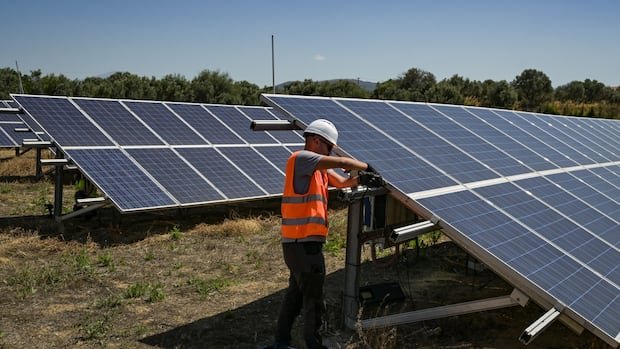In June, solar power became the primary source of electricity in the European Union, surpassing nuclear and wind energy, according to data from energy think tank Ember. Solar energy accounted for 22.1% of the EU’s electricity, up from 18.9% the previous year, generating 45.4 terawatt hours due to favorable sunshine and increased solar installations. Nuclear power closely followed at 21.8%, with wind contributing 15.8% to the energy mix.
Thirteen EU countries, including Germany, Spain, and the Netherlands, recorded their highest-ever monthly solar generation levels, signaling a significant shift in the region’s power system. Chris Rosslowe, a senior energy analyst at Ember and lead report author, highlighted the importance of solar energy stepping up during peak demand periods like summer heat waves.
Coal’s share in the EU’s electricity mix plummeted to a record low of 6.1% in June, down from 8.8% the previous year, with a 28% decrease in electricity generation. Germany and Poland, major coal electricity producers in the bloc, also experienced record low coal generation levels. Spain, on the verge of phasing out coal entirely, generated only 0.6% of its electricity from coal during the same period.
While wind power achieved new records in May and June following a slow start to the year, fossil fuel usage in the first half of the year increased by 13% compared to the previous year. The rise was primarily driven by a 19% surge in gas generation to compensate for lower hydro and wind output earlier in the year.
Amid a 2.2% increase in electricity demand in the EU in the first half of the year, expanding battery storage and enhancing grid flexibility are identified as crucial steps to reduce reliance on fossil fuels during non-solar hours, as highlighted in the Ember report.
In Canada, solar power currently represents only about one percent of electricity generation, but the sector is rapidly expanding. Principal Economist at the Canadian Climate Institute, Dave Sawyer, noted the growing trend away from gas due to rising prices and the decreasing cost of solar technology. Sawyer emphasized the importance of incorporating batteries with solar to drive its integration into the energy system.
Canada heavily relies on hydropower, accounting for about 56% of its electricity generation, in contrast to the EU. The countries share a similar usage of nuclear energy, ranging from 16% to 21%. Wind power constitutes 10% in Canada and 16% in the EU. Sawyer also mentioned Canada’s focus on enhancing battery storage capacity to support increased electrification through solutions like heat pumps and electric vehicles.
Efforts to develop affordable and reliable electricity sources are crucial, according to Sawyer, who stressed the need for pragmatic approaches in energy planning to meet the growing demand for clean and sustainable power solutions.


